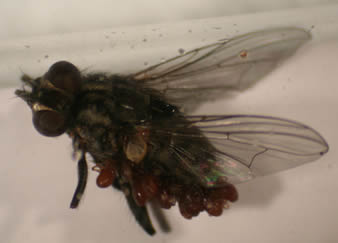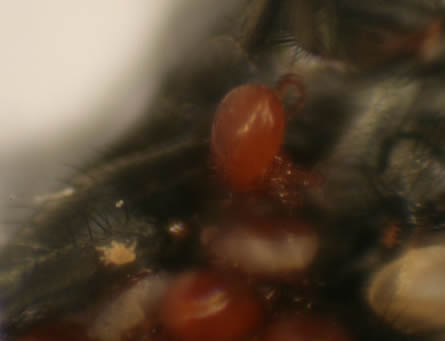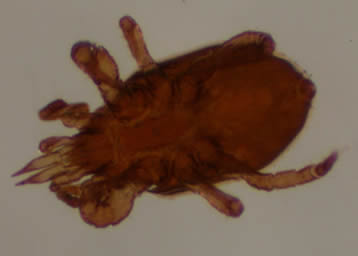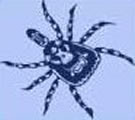House fly (Musca domestica), phoretic mite infestation
Excerpt on phoresy from Rodrigueiro and Prado, (2004)
Phoresy is a phenomenon in which an animal (the phoretic stage or phoront) actively seeks and attaches to the surface of another animal and then enters quiescence (no ontogenesis or feeding) in order to be transported to other habitats. After migration, if the conditions are suitable, the phoretics leave the host to colonize a new habitat. This dispersal is vital for species that live in fragmented areas separated by distances that are unsurpassable to them.
|

House fly with mite infestation, mites attached to thorax and abdomen
 Mites (Macrocheles spp.) on House fly, attached to thorax and abdomen. (Note the presence of a much smaller mite, possible a poultry mite) Mites (Macrocheles spp.) on House fly, attached to thorax and abdomen. (Note the presence of a much smaller mite, possible a poultry mite)

Mite (Macrocheles spp.) isolated from House fly, ventral aspect |



 Mites (Macrocheles spp.) on House fly, attached to thorax and abdomen. (Note the presence of a much smaller mite, possible a poultry mite)
Mites (Macrocheles spp.) on House fly, attached to thorax and abdomen. (Note the presence of a much smaller mite, possible a poultry mite)